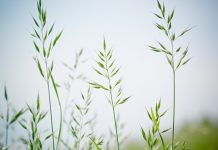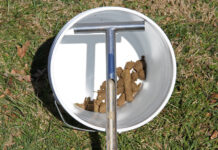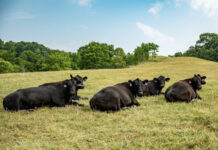Late summer can be an excellent time to establish new forage stands. It is also a good time to seed in bare or thin spots in stands established this spring.
While we can’t control the weather, there are several things we can control that will improve the chances for successful forage stand establishment.
First, apply lime and fertilizer according to a recent soil test. Also, control problem perennial weeds ahead of seeding.
Be careful with herbicide selection because some have residual soil activity and will harm new forage seedings if proper waiting periods are not observed.
Be sure to read the labels for details.
If you are going to use tillage, prepare a firm seedbed. Loose seedbeds dry out very quickly. Deep tillage is not ideal for late summer seedings.
Cultipacker or cultimulchers are excellent last-pass tillage tools. The soil should be firm enough for the heal of your boot to sink no deeper than 3/8 to 1/2 inch.
No-till seedings conserve moisture and can be very successful provided weeds are controlled prior to seeding. Remove all straw from fields previously planted to small grains. Any remaining stubble should either be left standing, or clipped and removed.
Alfalfa
Do not leave clipped stubble in fields because it will form a dense mat that prevents good emergence. If you plan to seed alfalfa, don’t plant new alfalfa immediately after an older established alfalfa stand.
Autotoxic compounds are released by old alfalfa plants, which inhibit growth and productivity of new alfalfa seedlings. You can seed in alfalfa in late summer to thicken up a new alfalfa seeding that was made this spring.
The autotoxic compounds are not present in young alfalfa plants. They are released from older, established alfalfa plants.
Weather
Seed when soil moisture is adequate or a good rain system is in the forecast. Soil moisture conditions in Ohio have been favorable this summer, and hopefully will continue through the remainder of the year. But do keep in mind that it is risky to place seeds into dry soil — there may be just enough moisture to germinate the seed but not enough to get the seeding established.
Plant new perennial forages in August. Seedlings require at least 6 to 8 weeks of growth after emergence to have adequate vigor to survive the winter.
Plant during the first two weeks of August in northern Ohio, and by Aug. 30 in southern Ohio.
Planting later than those dates may work, but there is more risk for establishment failure and the stand may have lower yield potential next year.
Slow establishing species should be planted in as early August as possible.
Fast establishing species like red clover, alfalfa, and orchardgrass can be seeded up to the dates listed above if moisture is present.
Kentucky bluegrass and timothy can actually be seeded 15 days later than the dates listed above.
Seed depth
Plant the seed shallow (1/4 to 1/2 inches deep) and in firm contact with the soil.
Carefully check seeding depth, especially when using a no-till drill. Use a drill with press wheels for greatest success with summer seeding. Broadcasting seed on the surface without good soil coverage and without firm packing is usually a recipe for failure in the summer.
Use high quality seed of known forage-type varieties from reputable dealers. Cheap seed often results in lower yield and shorter stand life.
Make sure legume seed has fresh inoculum of the proper rhizobium to ensure nitrogen fixation. As the stand develops this fall, do not be tempted to harvest it.
No matter how much growth accumulates, it is usually best to let the cover protect the new crowns during the winter.
The only exception to the no fall harvest rule for late summer seedings is perennial ryegrass. If perennial ryegrass has tillered and has more than 6 inches of growth in late fall, clip it back to 3 to 4 inches in November or early December.
Finally, scout new seedings for winter annual weeds in October. Apply herbicides as needed. Winter annual weeds are much easier to control in late fall than they will be next spring.
By following these guidelines, and with a little cooperation from the weather, I trust you will have a vigorous and productive new forage stand next year.
(The author is an associate professor in the Department of Horticulture and Crop Science at Ohio State University. Questions and comments can be sent in care of Farm and Dairy, P.O. Box 38, Salem, OH 44460.)












